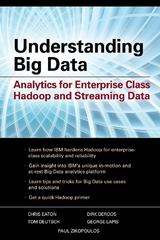Question
simulate a Three-State process model (ready, running and blocked) and a simple process control block structure in c++. Your program will read input and directives
simulate a Three-State process model (ready, running and blocked) and a simple process control block structure in c++. Your program will read input and directives from a file. The input describes a time sequence of events that occur. These are the full set of events you will simulate: Event Description cpu The processor executes for 1 time step the currently running process new A new process is created and put at tail of the ready queue done The currently running process has nished wait X The currently running process has done an I/O operation and is waiting on event X event X Event X has occurred, the process waiting on that event should be made ready. use the following psudo code.
* @description Implement a simulation of a basic 3 process state system
* Ready, Running, Blocked. Simulation includes a round-robin scheduler
* with time slice scheduling. Need to implement a basic Process
* Control Block (PCB) in order to implement the round robin scheduler.
* Program will also have ready queues, and possible queues or other
* structures to keep track of blocked processes and the events they
* are waiting on.
*/
#include
#include
#include
#include
using namespace std;
int CurrentSystemTime = 1;
int nextProcess;
enum ProcessState;
{
NEW,
READY,
RUNNING,
BLOCKED,
DONE
};
struct ProcessControlBlock
{
int pid;
int start;
int timeSliceQuantumsUsed
ProcessState state;
int event;
};
ProcessControlBlock processTable[100];
/** The process simulator.
* The main loop for running a simulation. We read simulation
* events from a file
*
* @param simfilename The name of the file (e.g. simulaiton-01.sim) to open
* and read simulated event sequence from.
* @param timeSliceQuantum The value to be used for system time slicing preemption
* for this simulation.
*/
void runSimulation(char* simfilename, int timeSliceQuantum)
{
ifstream simeventsfile(simfilename);
string command;
int eventnum;
if (!simeventsfile.is_open())
{
cout << "Error: could not open simulator events file: " << simfilename << endl;
exit(1);
}
while (!simeventsfile.eof())
{
simeventsfile >> command;
// Handle the next simulated event we just read from the
// simulation event file
if (command == "cpu")
{
cout << " cpu: simulate a cpu cycle here" << endl;
}
else if (command == "new")
{
cout << " new: simulate creation of new process here" << endl;
ProcessControlBlock newProcess;
newProcess.pid = nextProcessID;
nextProcessID++;
newProcess.state = NEW;
processTable[newProcess.pid] = newProcess;
}
else if (command == "done")
{
cout << " done: simulate termination of currently running process here" << endl;
}
else if (command == "wait")
{
simeventsfile >> eventnum;
cout << " wait: eventnum: " << eventnum <<
" simulate event blocked and waiting" << endl;
}
else if (command == "event")
{
simeventsfile >> eventnum;
cout << " event: eventnum: " << eventnum <<
" simulate event occurring possibly making some processes ready" << endl;
}
else if (command == "exit")
{
// we use an explicit indicator to ensure simulation exits correctly
break;
}
else
{
cout << " ERROR: unknown command: " << command << endl;
exit(0);
}
}
simeventsfile.close();
}
/** Main entry point of simulator
* The main entry point of the process simulator. We simply set up
* and initialize the environment, then call the appropriate function
* to begin the simulation. We expect a single command line argument
* which is the name of the simulation event file to process.
*
* @param argc The argument count
* @param argv The command line argument values. We expect argv[1] to be the
* name of a file in the current directory holding process events
* to simulate.
*/
int main(int argc, char** argv)
{
int timeSliceQuantum = 0;
// validate command line arguments
if (argc != 3)
{
cout << "Error: expecting event file as first command line parameter and time slice quantum as second" << endl;
cout << "Usage: " << argv[0] << " simeventfile.sim time_slice" << endl;
exit(1);
}
// Assume second command line argument is the time slice quantum and parse it
timeSliceQuantum = atoi(argv[2]);
if (timeSliceQuantum <= 0)
{
cout << "Error: invalid time slice quantum received: " << timeSliceQuantum << endl;
exit(1);
}
// Invoke the function to actually run the simulation
runSimulation(argv[1], timeSliceQuantum);
// if don't want to use command line do following.
// need to recompile by hand since file
// name to get simulated events from is hard coded
//runSimulation("simulation-01.sim", 5);
return 0;
}
Step by Step Solution
There are 3 Steps involved in it
Step: 1

Get Instant Access to Expert-Tailored Solutions
See step-by-step solutions with expert insights and AI powered tools for academic success
Step: 2

Step: 3

Ace Your Homework with AI
Get the answers you need in no time with our AI-driven, step-by-step assistance
Get Started


